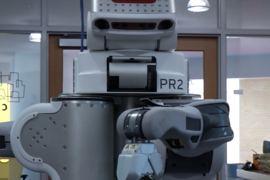Jonathan P. How, the Richard C. Maclaurin Professor of Aeronautics, has been elected a fellow of the American Institute of Aeronautics and Astronautics (AIAA), the world’s largest aerospace professional society.
Edward Greitzer, the H.N. Slater Professor of Aeronautics and Astronautics at MIT and an AIAA Honorary Fellow, said, “Election as an AIAA Fellow is among the highest honors bestowed by the aerospace community. It recognizes Jon’s exceptional contributions to the field, both nationally and internationally.”
How heads the MIT Aeronautics and Astronautics Department’s Information Sector. He is director of the Ford-MIT Alliance, and is a member of the United States Air Force Scientific Advisory Board. He is editor-in-chief of the IEEE Control Systems Magazine and an associate editor for the AIAA Journal of Aerospace Information Systems.
How was the planning and control lead for the MIT team that placed fourth in the 2007 DARPA Urban Challenge. His research encompasses design and implementation of distributed robust planning algorithms to coordinate multiple autonomous vehicles in dynamic uncertain environments; sensor fusion and navigation; aerial robotics and agile flight; and planning and learning for real-time autonomous mechanical and aerospace applications.
Following receipt of his MIT doctorate in 1993, How studied at the Institute for two years as a postdoc working on the Middeck Active Control Experiment (MACE) that flew onboard the Space Shuttle Endeavour in March 1995. Prior to joining the MIT faculty in 2000, he was an assistant professor in the Department of Aeronautics and Astronautics at Stanford University.









